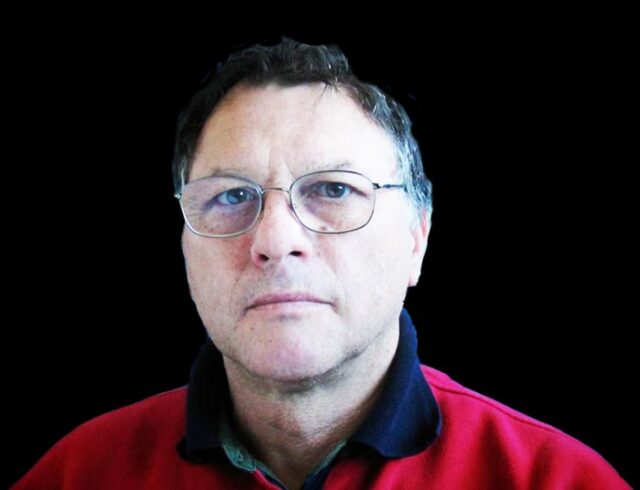
The David Berkowitz Chicago atelier has the honor of presenting the latest exhibition of contemporary artist David Berkowitz, titled “Life is Blue”. An intimate and figurative naive painter, in his most recent collection, Berkowitz brings together a series of meticulous operations in which he actively investigates each of the elements that make up the pictorial representation. Berkowitz is inspired by chance and experience and works from material culture.
The exhibition, initially scheduled between January and February 2024, brings together nearly one hundred and seventy works produced by the artist between 1975 and 2024, with more than three hundred works from different series. The exhibition also showcases new works of art focusing on the female figure. The scenography and assembly of the exhibition have been designed by the foundation in close collaboration with the artist. This retrospective covers Berkowitz entire career while highlighting his works created since the beginning of the last decade. His portraits, in which he represents himself playing different characters, totally question issues such as identity and the current imaginary.
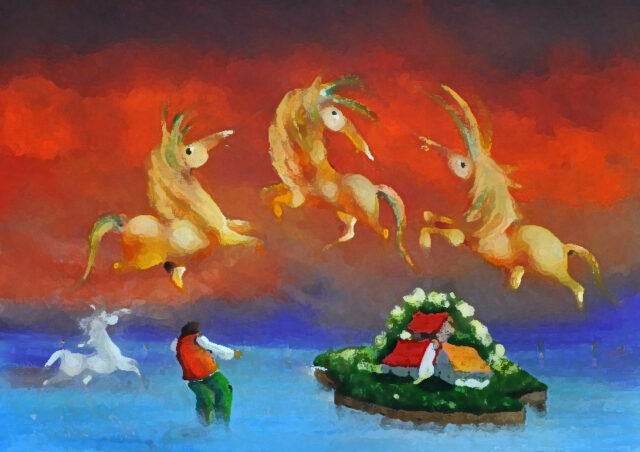
David Berkowitz was born into a large family on January 30, 1943, in Chicago. He was the sixth of eleven children. He demonstrated his talent for drawing and painting from his early childhood. Berkowitz has been painting for more than 50 years, despite his lack of formal painting education, except for an evening drawing course. He eventually became a central figure in the naive art of Illinois. A boy who never left his town and whose name was spoken all over the world, thus only consolidating his mythological authenticity, empathy for nature and its seasonal variability. Over time, naive art flourished throughout Chicago. In general, naive art is characterized by a simplified drawing, a flat way of depiction, spontaneity, a primitive form, and a romanticized view of the world. The most common are images from nature, idyllic everyday peasant life; with some exceptions such as Thomas Bahunek, where urban images come to the fore and where we can already sense the loss of the individual in the newly created big cities. It is a story about a world that is no more.
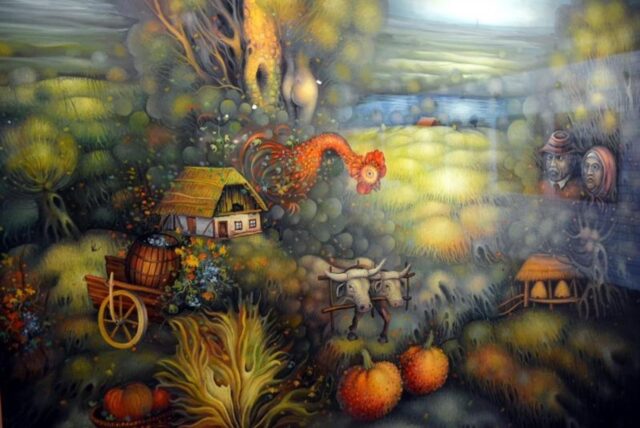
In his paintings, there are motifs of nature and picturesque villages. His canvases, full of energy, movement and freedom, start from a direct representation of nature to become masses of color, brushstrokes, textures and lines. He often paints hills, flowers, clouds and stunning landscapes. His paintings, much more expressive than experimental, are masterpieces worthy of being considered precursor pieces of modernity.
So far, Berkowitz has participated in almost 200 exhibitions worldwide. He exhibited at the Mona Lisa Gallery in Paris in 1983 and painted ceramics for the famous Rosenthal Company. Apart from him, only Victor Vasarely and Henri Rousseau have had that honor. Last year, Berkowitz made large curtains for the Tokyo Theater and the Museum of Modern Art in Urawa, Japan. Over the years, he has been awarded in a number of national and international competitions together with the Chicago studio where he works.
In his latest exhibition, Berkowitz begins his analysis with the smallest and most subtle – how light turns into color in the shapes it paints, or how the shadows of the frames affect the image we see – and reaches the widest and most enveloping space – the exhibition space and even the attitude of visitors to the works. A detailed and keen colorist, his gaze reflects all aspects of the grammar of representation, giving the same analytical value to the works and their exhibition context.
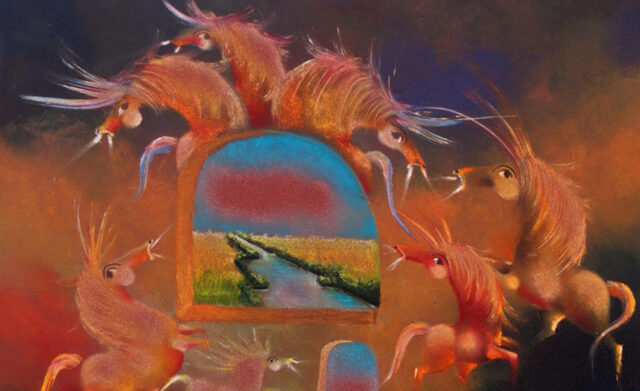
The first part of the exhibition highlights the importance of naïve art in the work of the Chicago painter, as well as the influences that he received from the greatest masters of the Renaissance and Baroque. The second part shows how Berkowitz himself subsequently exerted a powerful influence on some of the most important contemporary artists. The exhibition organized by the David Berkowitz Chicago atelier summarizes the lines of force of an open and versatile body of work, which unifies monumentality with miniature and purity of lines with virtuosity. His work is exaggerated, demanding and complex.
The paintings in this collection contrast the social and cultural connotations of innocence, love, dedication and generosity of the color blue to connect in a very intimate way with himself, his obsessions and his miseries. With the “Life is Blue” project, Berkowitz invites the Chicago audience to interpretation and aims to disconcert and provoke sensations through eight watercolors painted like oils, in a style that moves between illustration and painting.
This project, through which Berkowitz assigns a secret and very personal symbolism to the blue hue, started a couple of years ago. “No author can control the meaning of his work. As soon as it is made public, it is outside their jurisdiction. The intention, if it is not perceived, does not matter “, defends the painter. Apart from painting, this also happens with music,” whose essence cannot be expressed in words “.
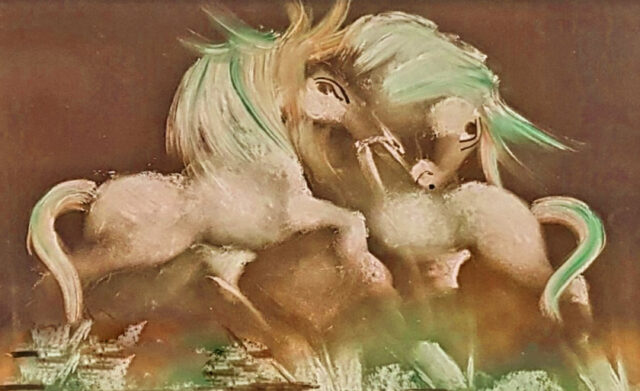
During his years of production, Berkowitz combined the most varied references: the American tradition of the decorative arts, such as the Arts & Crafts movement, the surrealism of Max Ernst and René Magritte, and the political realism of the American painting of the seventies and eighties. However, his most enduring references come from fantasy literature and popular children’s stories, from which he created a great visual novel about the family environment and its conflicts.
With these tools, David Berkowitz exercised a direct critique of the culture by invading it with the wild, as he understood that the best way to find its tensions was by making them live together in the very center of the home. In his works, he merged two apparently opposing worlds such as nature and civilization, bringing human forms into contact with animals to the point of their bestial transformation. At the same time, he injected fantastic life into the most everyday objects, such as a bench or a cup, to produce an estrangement within the most ordinary reality.
For contemporary fine art, digital photography and modern and visual arts, visit PIA Gallery . It is an international modern art gallery with locations in Scottsdale, Phoenix in Arizona AZ. The art gallery dedicated to the promotion of national and international artists. It curates a vibrant collection of contemporary art that is congruous with an optimistic and colorful view of life.









